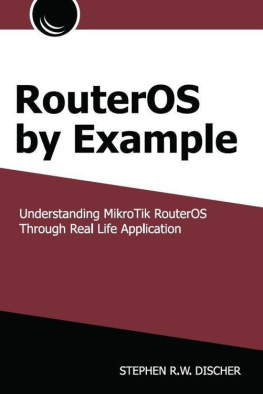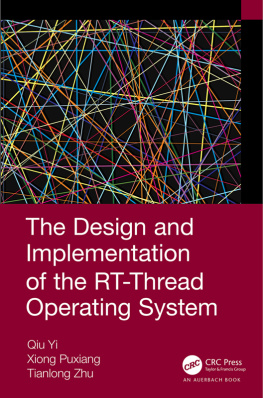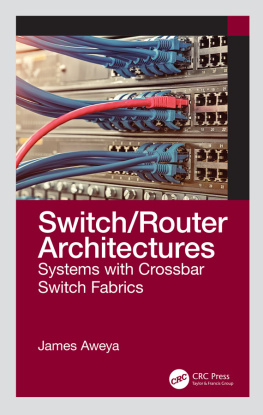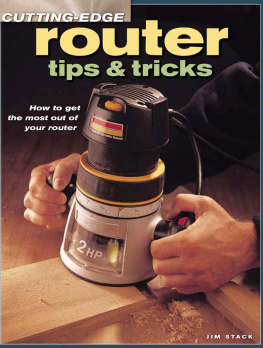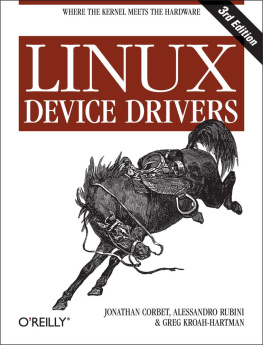RouterOS by Example
Understanding MikroTik RouterOS
Through Real Life Applications
Stephen R.W. Discher
Editor: Bruce Pinnell
Cover Design: Enrique Gonzales
Illustrator: Phillip Crawford
Copyright 2011 by Stephen R.W. Discher. All rights reserved.
This book or any portion thereof may not be reproduced or used in any manner whatsoever without the express written permission of the author except for the use of brief quotations in a book review.
Printed in the United States of America, first printing, 2011.
ISBN 978-0-615-54704-6
Stephen R.W. Discher
LearnMikroTik.com
10770 State Highway 30
Suite 200
College Station, Texas 77845

Table of Contents
Acknowledgement
An old mentor of mine, a seasoned U.S. Veteran, a former Air Force fighter pilot, and one of the Junction Boys from Texas A&M University has told me time and time again for every negative there is a positive and our daily mission is to find it. Fortunately, I have learned that instead of focusing on the negatives in life, I can appreciate the wisdom that comes from a wealth of mistakes, to take daily notice of the unparalleled beauty I see in the world around me and most of all to value the relationships I have with those closest to me, my family, my friends and my co-workers.
Why have I begun with an analysis of positive and negative? Well, I have learned in life that each of us is blessed by our Creator with many things but one of the most important is the people around us, those that touch our lives every day in a large or small way and thereby make it better. Those that live this life with us, the good and the bad, the positive and the negative, the same daily challenges, joys and disappointments you too experience. In writing this book I undoubtedly missed some chances to spend time with my wife, to play ball with my kids, or to have more patience with a co-worker or employee and to each of you that made a sacrifice for me, I say thank you. I know this investment of time did not come without a price and I can truly appreciate your contribution. Now if I follow Dennis mentoring, I must admit that on the positive side I have learned to appreciate each of you a little more. Again, I say thanks.
Especially to the loves of my life Carolyn, Lauren, Lexie and Drew, thank you for allowing me to do this. I love you all and I am proud you are my family.
INTRODUCTION
You are likely reading this book because you are looking for answers, to questions like What can this little white plastic box do for me? or Why cant I figure out how to configure this particular feature? Likely you have attempted to read the documentation or a book on the subject but you still have questions. If that is you, then read on.
I too had these types of questions more than 6 years ago when I downloaded my first trial copy of RouterOS. It didnt take long to realize the power I had at my fingertips and quickly learned to appreciate the numerous features this routing system performs to wow my clients.
I have always been a hands on type of guy. I learn by doing and I teach through examples and have attempted to do that in this book but more on that later. If you too want answers and are ready to enhance your solutions tool box, then you have picked a winner with MikroTik and RouterOS.
Who or What is MikroTik?
Located in Riga, Latvia, MikroTik was founded in 1995 to develop routers and wireless ISP systems. Latvia is a member of the European Union and is nestled on the Baltic Sea between Estonia and Lithuania. With more than seventy employees at the time of this writing, MikroTik is a growing company with a full-featured router operating system, RouterOS. In 2002, MikroTik entered the hardware manufacturing field with the brand RouterBOARD. RouterBOARD continues to develop new designs, targeting small companies, WISPS (Wireless Internet Service Providers) and wired ISPs (Internet Service Providers) looking for high performance, small footprint and a powerful feature set.
About The Author
Stephen Discher is an entrepreneur and a 1987 graduate of Texas A&M University. He makes his home in College Station, Texas where he lives with his wife and three children. A native of Texas, he has been in the technology field since 1983 when he worked part time as an electrical technician at a company that built offshore cable handling systems while he was attending college.
Upon graduation, he started his first company, Deck Systems & Equipment, designing and building custom equipment for the offshore Geophysical industry. In 1999, he sold the company and began working as a consultant for numerous companies, all in the technology field.
In 1993 he became involved with computers and networking in the telecommunications industry and in 1999 joined as a partner in American Cable Services.
In 2005, he sold his interest in ACS and began working as the Director of Operations for FIBERTOWN, a technology campus and Tier IV data center in Bryan, Texas. Simultaneously, he started Wickson Wireless, a WISP or Wireless Internet Service Provider in Bryan, Texas. During the next few years he earned all of the MikroTik certifications and became a MikroTik Certified Trainer.
In 2010, he left FIBERTOWN to work full time at his WISP, Wickson Wireless and teaching MikroTik classes.
In 2011, he sold Wickson Wireless and today works full time doing MikroTik training with LearnMikroTik.com.
In his spare time, he enjoys flying his 1941 Piper J3 Cub, fly fishing and camping with his family.
What is RouterOS?
In simple terms, RouterOS is routing software that runs on a PC based hardware platform. Whether its a conventional X86 based PC, a RouterBOARD, embedded device, or a virtual machine, RouterOS is an operating system that will make your device a dedicated router, a bandwidth shaper, a transparent packet filter, or a wireless enabled device. Have an old PC lying around? With RouterOS, it can be converted into a powerful router!
RouterOS can also be installed on a virtual machine, VMware/ESX environment, or parallels if you are using Mac.
RouterBOARD is a hardware platform manufactured by MikroTik. The product can range from a very small home router to a carrier class access concentrator. If you need features and power on a budget, then read on. If you are new to MikroTik or RouterOS, this is going to astound you.
RouterBOARD The MikroTik Hardware Platform
As previously stated, you dont need a RouterBOARD to run RouterOS; it can be run on any X86 based personal computer, however, the RouterBOARD platform is a cost efficient series of devices specifically designed to be powerful routers. A brief introduction to the product line will help you understand how to pick the correct device for your application.
RouterBOARD Product Designations
RouterBOARDs can be divided into two basic groups: Integrated meaning in a case, ready to use and RouterBOARDs which are bare motherboards ready to accept wireless interfaces and a suitable case.
They are also designated by a product name that is descriptive of the products physical capabilities.
The line of integrated devices includes the popular RB750 or the RB751U-2HnD.
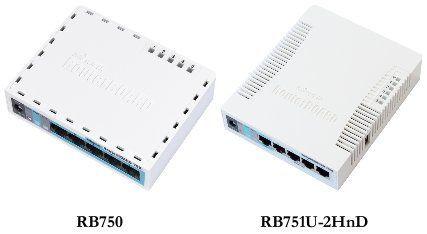
These are SOHO or small office, home office type routers suitable for use as Internet gateways, firewalls, VPN concentrators or wireless access points.
The model number tells you about the capabilities of a RouterBOARD device. For example, the RB designates it is a RouterBOARD, the 7 designates it is a 700 series device with respect to the base system design, the 5 means 5 Ethernet ports and the 0 in RB750 means there is no provision for wireless interfaces, that is, no integrated wireless cards or mini PCI slots to accept a wireless card.
Next page
